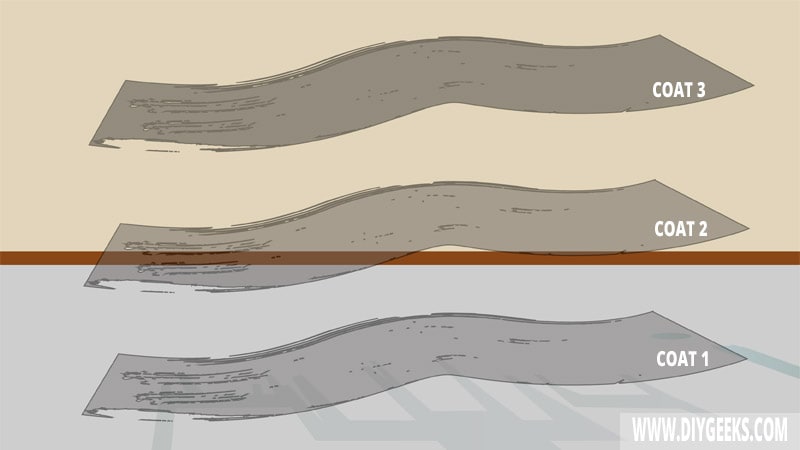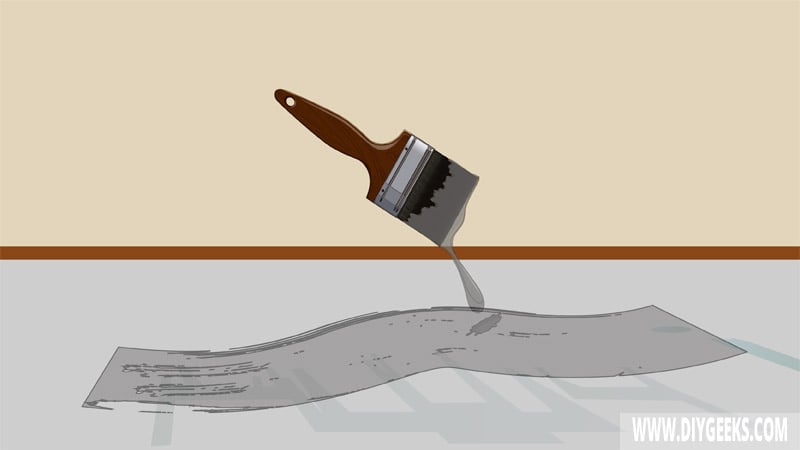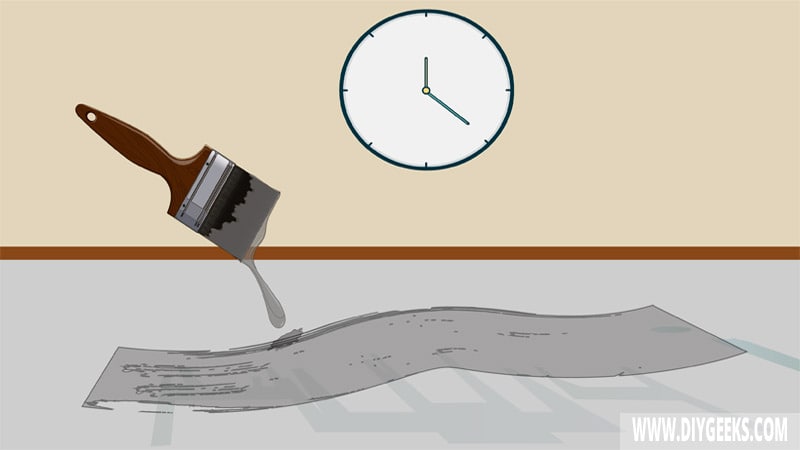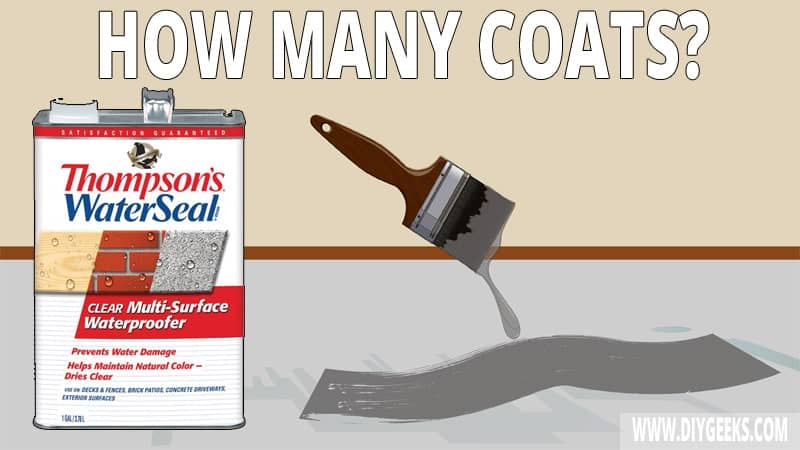You need between 1-2 Thompson’s water seal coats for proper coverage and durability. One (1) Thompson’s water seal coat contains enough additives to protect a surface from water, moisture, and other elements.
The number of Thompson’s water seal coats matters as it determines the water resistance, sealing qualities, and finish dry time.
If you apply too many Thompson’s water seal coats, the finish dries slower, turns sticky, and can peel off. If you don’t apply enough coats, the finish won’t have proper coverage and durability.
What’s the Maximum and Minimum Thompson’s Water Seal Coats Number?
The maximum of Thompson’s Water Seal coat number is two (2), while the minimum is one (1).
You need one (1) Thompson’s Water Seal coat for indoor surfaces, and two (2) coats for outdoor surfaces.
One (1) Thompson’s Water Seal is formulated with enough protective additives and is thick enough to protect the surface. You can apply two (2) coats for outdoor surfaces that need more protection.
Three (3) Thompson’s Water Seal are too much and can create a thick finish that can turn sticky and peel off.
Why Does Thompson’s Water Seal Coat Number Matter?

The Thompson’s water seal coat number matters as it determines the water resistance, sealing qualities, dry time, and the finish color shade.
If you apply the right amount of Thompson’s water seal coats, the paint finish will have high water resistance qualities, dry in time, and have the right color shade.
If you don’t apply enough Thompson’s water seal coats, the finish won’t have proper coverage or water resistance and won’t protect the surface properly. This leads to the paint finish getting removed more easily.
If you apply too many Thompson’s water seal coats, the finish will be too thick and can peel off, dry slower and turn sticky, and have a deep color shade.
The finish water resistance won’t increase if you apply more coats — instead, the finish will become too thick and can peel off.
How To Know If You Need An Extra Thompson’s Water Seal Coat?

To know if you need an extra Thompson’s water seal coat, inspect the finish. You need an extra coat if the finish has a lighter color shade, doesn’t properly cover the surface, or the finish is too thin.
You don’t need an extra Thompson’s water seal coat if the finish has covered the surface properly and is thick enough to protect it.
To know if the sealer is protecting the surface, pour water over it. You don’t need another coat if the water doesn’t penetrate the surface, but stays over it.
You can check the manufacturer’s guide to know the exact number for Thompson’s water seal coat based on the surface type.
What Happens If You Don’t Apply Enough Thompson’s Water Seal Coats?
If you don’t apply enough Thompson’s water seal coats the finish won’t have proper coverage or water resistance and won’t protect the surface properly. The finish will be thinner and have a lighter color shade.
If the sealer doesn’t cover the surface properly, water or moisture penetrates the surface more easily and damages it. The Thompson’s water sealer coating won’t be water resistant with fewer coats and won’t protect the surface from water or moisture properly.
With fewer coats, the finish is thinner and has a lighter color shade as there are fewer pigments on the surface. A thin finish is damaged or removed easier than a thick finish.
What Happens If You Apply Too Many Thompson’s Water Seal Coats?
If you apply too many Thompson’s water seal coats, the finish dries slower, it can turn sticky and peel off, it becomes too thick, and produces a deeper color shade.
The more Thompson’s water seal coats you apply, the longer the finish takes to dry as there’s more solvent to evaporate from the surface. The longer the finish takes to dry, the more dirt it accumulates.
If the sealer is too thick and takes too long to dry, the finish turns sticky (or tacky) and can peel off eventually.
Too many coats produce a deeper color shade that covers the surface underneath. Most of Thompson’s water seal finishes are colorless (transparent) and don’t cover the surface underneath. But if you apply too many coats, the finish becomes blurry (or milky) and covers the surface and paint underneath.
How Long Does Thompson’s Water Seal Take to Dry Between Coats?

Thompson’s water seal takes around two (2) hours to dry between coats. The exact dry time depends on the number of coats, room temperature and humidity levels, and surface type.
Thompson’s water sealer dries through solvent evaporation — its solvent (water or oil) must evaporate from the surface and the coating must become rigid (hard) for the sealer to dry.
The more Thompson’s water seal coats you apply, the longer the finish takes to dry as there’s more solvent (oil or water) to evaporate from the surface. If the temperature is higher than 50°F (10°C) and humidity is lower than 50%, the sealer dries faster.


